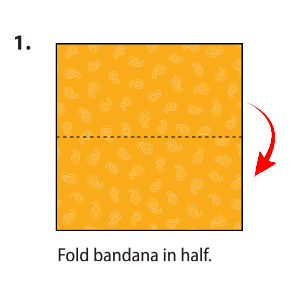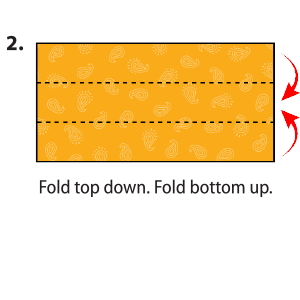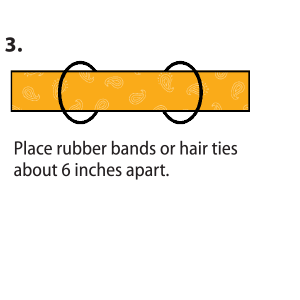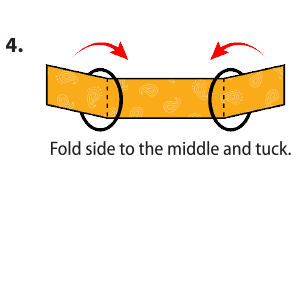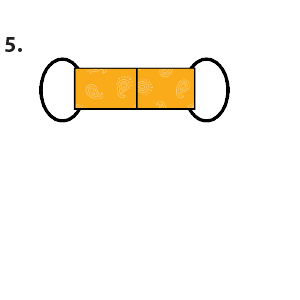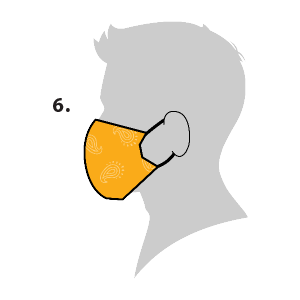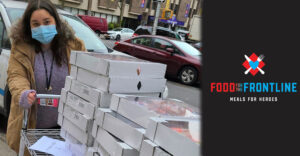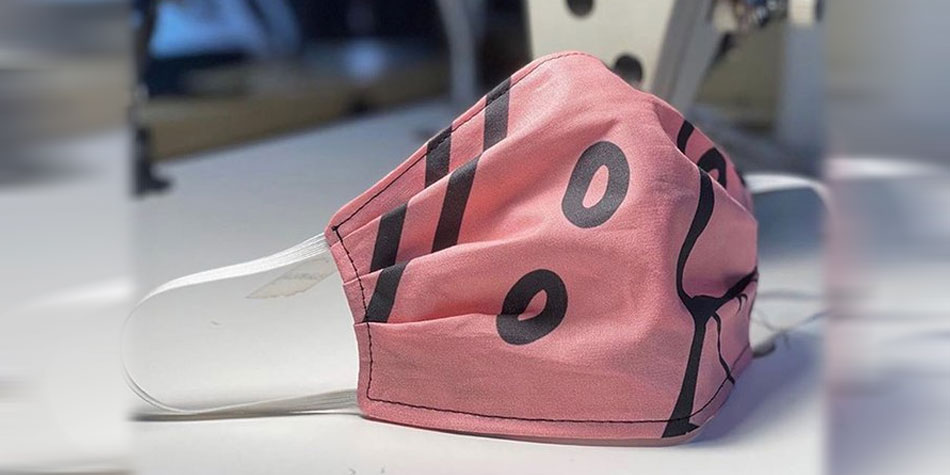
One volunteer project. 100 volunteers. 6,500 masks and counting, produced and delivered to hospitals. All while respecting social distancing measures. No feat is too big for the #Sew4Lives organizers and FIT Alumni, Caroline Berti ’07 and Karen Sabag ’07. The Sew4Lives volunteer project was founded by these FIT Alumni with the goal of helping to meet the demand of personal protection equipment for frontline workers within the COVID-19 crisis. The volunteers took to the sewing machines to produce hospital-grade face masks, made of the readily accessible, easy to clean, and impermeable to the virus, Polypropylene.
With support coming from alumni, students, friends of FIT, and SUNY, Sew4Lives has expanded nationwide. The FIT alumni pioneered the efforts to establish teams in various regions, in addition to supporting national groups in other states. The widespread collaboration led Berti to share a moment of truth when she recognized how social distancing has arguably connected everyone on the mission.
Speaking of missions, New York State is hankering down on the mission to control the rate of infection brought on by COVID-19. As part of Governor Cuomo’s plan to “Unpause” New York, all New Yorkers are required to wear a face-covering when out in public as of April 17th, 2020. From the bread aisle in the grocery store, line in the pharmacy, to riding the public bus, face coverings will serve as a precaution when entering public areas where it’s difficult to social distance.
There are different types of face coverings: Surgical masks, N95 respirators, and Cloth Masks, among others. The CDC advises the public to use cloth face coverings in order to reserve critical supplies, such as surgical masks and N95 respirators for healthcare workers. An understanding of the different types of face coverings and how to assure your cloth face-covering meets CDC standards is how we can all do our part in safe public social distancing.
No need to worry. You don’t have to be an FIT trained fashion designer to create cloth masks at home, check out these CDC approved sew and no sew instructions:
Make Your Own Cloth Face Mask Covering
Materials
- Two 10″x6″ rectangles of cotton fabric
- Two 6” pieces of elastic (or rubber bands, string, cloth strips, or hair ties)
- Needle and thread (or bobby pin)
- Scissors
- Sewing machine
Tutorial
- Cut out two 10-by-6-inch rectangles of cotton fabric. Use tightly woven cotton, such as quilting fabric or cotton sheets. T-shirt fabric will work in a pinch. Stack the two rectangles; you will sew the mask as if it was a single piece of fabric.
- Fold over the long sides ¼ inch and hem. Then fold the double layer of fabric over ½ inch along the short sides and stitch down.
- Run a 6-inch length of 1/8-inch wide elastic through the wider hem on each side of the mask. These will be the ear loops. Use a large needle or a bobby pin to thread it through. Tie the ends tight. Don’t have elastic? Use hair ties or elastic head bands. If you only have string, you can make the ties longer and tie the mask behind your head.
- Gently pull on the elastic so that the knots are tucked inside the hem. Gather the sides of the mask on the elastic and adjust so the mask fits your face. Then securely stitch the elastic in place to keep it from slipping.
Quick Cut T-shirt Covering (no sew method)
Materials
- T-shirt
- Scissors
Tutorial
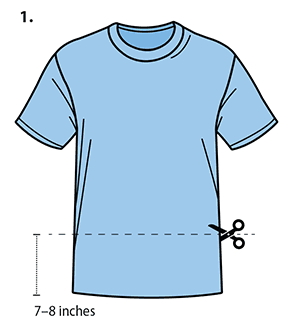
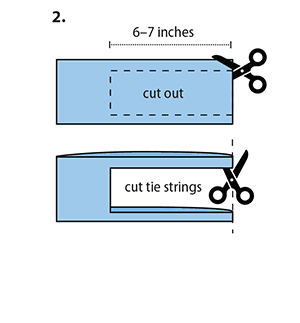
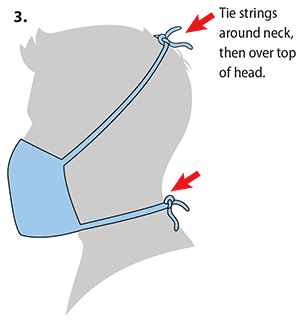
Bandana Face Covering (no sew method)
Materials
- Bandana (or square cotton cloth approximately 20”x20”)
- Rubber bands (or hair ties)
- Scissors (if you are cutting your own cloth)
Tutorial
